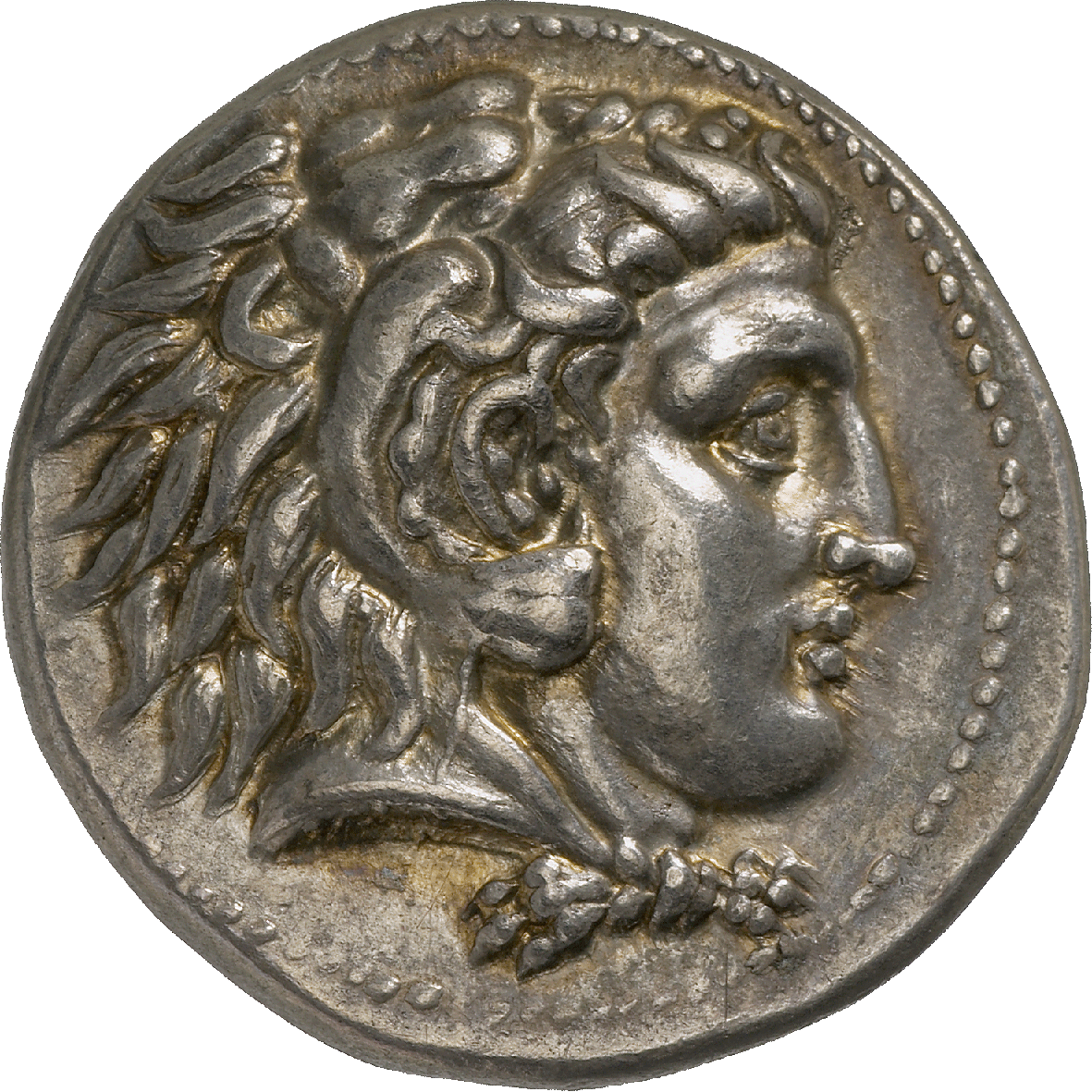Die Vorderseite dieser Tetradrachme zeigt Alexander den Grossen (336-323 v. Chr.) in Gestalt des griechischen Helden Herakles, den Alexander als Stammvater seines Geschlechts ansah. Auf der Rückseite ist Zeus mit seinem Adler zu sehen; die Inschrift lautet Alexandroy, etwa: Münze des Alexander.
Solche Tetradrachmen liess Alexander in riesigen Mengen prägen. Wurde eine neue Stadt eingenommen, dann wurden die in den Tempeln gelagerten Silbervorräte zu Münzen umgeprägt – hier jene der ägyptischen Stadt Memphis: Die Rose neben Zeus ist das Münzzeichen für Memphis. Mit Alexanders Soldaten verbreiteten sich auch seine Münzen in der ganzen damals bekannten Welt. Ihr Bekanntheitsgrad machte sie zu einer beliebten Währung im Fernhandel. Bald gaben Städte und später auch zahlreiche keltische Stämme eigene Münzen aus, die nach dem Vorbild der Alexandermünzen produziert waren.

